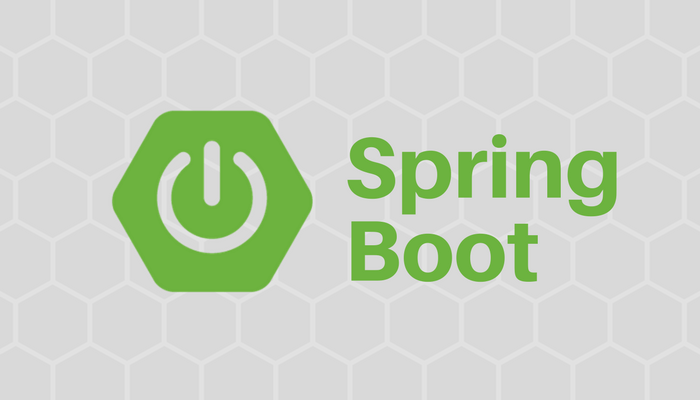Spring Boot (七): Mybatis極簡配置
- 2019 年 10 月 3 日
- 筆記
Spring Boot (七): Mybatis極簡配置

1. 前言
ORM 框架的目的是簡化編程中的資料庫操作,經過這麼多年的發展,基本上活到現在的就剩下兩家了,一個是宣稱可以不用寫 SQL 的 Hibernate ,一個是對 SQL 非常友好的 Mybaties ,,兩者各有特點,在企業級系統開發中可以根據需求靈活使用。發現一個有趣的現象:傳統企業大都喜歡使用 Hibernate ,互聯網行業通常使用 Mybatis 。
Hibernate 特點就是所有的 SQL 都用 Java 程式碼來生成,不用跳出程式去寫(看) SQL ,有著編程的完整性,發展到最頂端就是 Spring Data Jpa 這種模式了,基本上根據方法名就可以生成對應的 SQL 了,有不太了解的可以看筆者的前兩篇文章 Spring Boot (三): ORM 框架 JPA 與連接池 Hikari 和 Spring Boot (六): 為 JPA 插上翅膀的 QueryDSL。
Mybatis 初期使用比較麻煩,需要各種配置文件、實體類、Dao 層映射關聯、還有一大推其它配置。當然 Mybatis 也發現了這種弊端,初期開發了 generator 可以根據表結果自動生產實體類、配置文件和 Dao 層程式碼,可以減輕一部分開發量;後期也進行了大量的優化可以使用註解了,自動管理 Dao 層和配置文件等,發展到最頂端就是今天要講的這種模式了,mybatis-spring-boot-starter 就是 Spring Boot + Mybatis 可以完全註解不用配置文件,也可以簡單配置輕鬆上手。
2. 工程實戰
首先創建父工程 spring-boot-mybatis,引入全局依賴包,如下:
程式碼清單:spring-boot-mybatis/pom.xml
***
<dependencies> <dependency> <groupId>org.springframework.boot</groupId> <artifactId>spring-boot-starter-web</artifactId> </dependency> <dependency> <groupId>org.mybatis.spring.boot</groupId> <artifactId>mybatis-spring-boot-starter</artifactId> <version>2.1.0</version> </dependency> <dependency> <groupId>mysql</groupId> <artifactId>mysql-connector-java</artifactId> <scope>runtime</scope> </dependency> <dependency> <groupId>org.projectlombok</groupId> <artifactId>lombok</artifactId> <optional>true</optional> </dependency> <dependency> <groupId>org.springframework.boot</groupId> <artifactId>spring-boot-starter-test</artifactId> <scope>test</scope> </dependency> </dependencies>- mybatis-spring-boot-starter :目前最新版本為 2.1.0
2.1 極簡 xml 版
創建子工程 spring-boot-mybatis-xml
2.1.1 配置文件
application.yml 配置文件如下:
程式碼清單:spring-boot-mybatis/spring-boot-mybatis-xml/src/main/resources/application.yml
***
server: port: 8080 spring: application: name: spring-boot-mybatis-xml datasource: url: jdbc:mysql://localhost:3306/test?serverTimezone=Asia/Shanghai&useUnicode=true&characterEncoding=UTF-8&useSSL=false username: root password: 123456 driver-class-name: com.mysql.cj.jdbc.Driver type: com.zaxxer.hikari.HikariDataSource hikari: auto-commit: true minimum-idle: 2 idle-timeout: 60000 connection-timeout: 30000 max-lifetime: 1800000 pool-name: DatebookHikariCP maximum-pool-size: 5 mybatis: type-aliases-package: com.springboot.springbootmybatisxml.model config-location: classpath:mybatis/mybatis-config.xml mapper-locations: classpath:mybatis/mapper/*.xml- 這裡使用 hikari 作為資料庫連接池
- Spring Boot 會自動載入
spring.datasource.*相關配置,數據源會自動注入到sqlSessionFactory中,sqlSessionFactory會自動注入到 Mapper 中。 - 這裡需要指定基礎配置文件和實體類映射文件的地址
mybatis-config.xml 配置文件如下:
程式碼清單:spring-boot-mybatis/spring-boot-mybatis-xml/src/main/resources/mybatis/mybatis-config.xml
***
<configuration> <typeAliases> <typeAlias alias="Integer" type="java.lang.Integer" /> <typeAlias alias="Long" type="java.lang.Long" /> <typeAlias alias="HashMap" type="java.util.HashMap" /> <typeAlias alias="LinkedHashMap" type="java.util.LinkedHashMap" /> <typeAlias alias="ArrayList" type="java.util.ArrayList" /> <typeAlias alias="LinkedList" type="java.util.LinkedList" /> </typeAliases> </configuration>2.1.2 Mapper 映射文件
程式碼清單:spring-boot-mybatis/spring-boot-mybatis-xml/src/main/resources/mybatis/mapper/UserMapper.xml
***
<mapper namespace="com.springboot.springbootmybatisxml.mapper.UserMapper" > <resultMap id="BaseResultMap" type="com.springboot.springbootmybatisxml.model.User" > <id column="id" property="id" jdbcType="VARCHAR" /> <result column="nick_name" property="nickName" jdbcType="VARCHAR" /> <result column="age" property="age" jdbcType="INTEGER" /> <result column="create_date" property="createDate" jdbcType="TIME"/> </resultMap> <sql id="Base_Column_List" > id, nick_name, age, create_date </sql> <select id="getAll" resultMap="BaseResultMap" > SELECT <include refid="Base_Column_List" /> FROM user </select> <select id="getUser" parameterType="java.lang.String" resultMap="BaseResultMap" > SELECT <include refid="Base_Column_List" /> FROM user WHERE id = #{id} </select> <insert id="insertUser" parameterType="com.springboot.springbootmybatisxml.model.User"> <selectKey keyProperty="id" resultType="java.lang.String" order="BEFORE"> select uuid() as id from dual </selectKey> INSERT INTO user (id, nick_name, age, create_date) VALUES (#{id}, #{nickName}, #{age}, #{createDate}) </insert> <update id="updateUser" parameterType="com.springboot.springbootmybatisxml.model.User"> UPDATE user SET <if test="nickName != null">nick_name = #{nickName},</if> <if test="age != null">age = #{age},</if> <if test="createDate != null">create_date = #{createDate}</if> WHERE id = #{id} </update> <delete id="deleteUser" parameterType="java.lang.String"> DELETE FROM user WHERE id = #{id} </delete> </mapper>- namespace :需配置對應的介面
- 實現了簡單的 CRUD 操作
- 新增數據時選用 UUID 作為主鍵
- 動態條件可使用
<if>標籤作判斷
2.1.3 Mapper 層程式碼
程式碼清單:spring-boot-mybatis/spring-boot-mybatis-xml/src/main/java/com/springboot/springbootmybatisxml/mapper/UserMapper.java
***
public interface UserMapper { List<User> getAll(); User getUser(String id); Long insertUser(User user); Long updateUser(User user); Long deleteUser(String id); }- 這裡僅需定義介面方法, mybaties 會自動幫我們調用 xml 映射文件中的程式碼。
2.1.4 啟動主類
程式碼清單:spring-boot-mybatis/spring-boot-mybatis-xml/src/main/java/com/springboot/springbootmybatisxml/SpringBootMybatisXmlApplication.java
***
@SpringBootApplication @MapperScan("com.springboot.springbootmybatisxml.mapper") public class SpringBootMybatisXmlApplication { public static void main(String[] args) { SpringApplication.run(SpringBootMybatisXmlApplication.class, args); } }- 在啟動主類上配置
@MapperScan或者直接在 Mapper 類上增加註解@Mapper,兩種方法起到的結果是一樣的。不過建議選擇在啟動主類上配置@MapperScan,不然在每個 Mapper 類上加註解也麻煩,還容易漏加。
2.2 無配置文件註解版
2.2.1 配置
配置文件 application.yml 如下:
程式碼清單:
***
mybatis: type-aliases-package: com.springboot.springbootmybatisannotation.model- 剩餘部分和上面一致, mybatis 的配置僅需配置這一條足夠
2.2.2 Mapper 類
註解版的核心就是這個類,所有的 SQL 都在這個類裡面,程式碼如下:
程式碼清單:
***
public interface UserMapper { @Select("select * from user") @Results({ @Result(property = "id", column = "id"), @Result(property = "nickName", column = "nick_name"), @Result(property = "age", column = "age"), @Result(property = "createDate", column = "create_date") }) List<User> getAll(); @Select("SELECT * FROM user WHERE id = #{id}") @Results({ @Result(property = "nickName", column = "nick_name") }) User getUser(String id); @Insert("INSERT INTO user(id, nick_name, age, create_date) VALUES(#{id}, #{nickName}, #{age}, #{createDate})") @SelectKey(keyProperty = "id", resultType = String.class, before = true, statement = "select uuid() as id from dual") Long insertUser(User user); @Update("UPDATE user SET nick_name = #{nickName}, age = #{age} WHERE create_date = #{createDate}") Long updateUser(User user); @Delete("DELETE FROM user WHERE id = #{id}") Long deleteUser(String id); }- @Select 是查詢類的註解,所有的查詢均使用這個
- @Result 修飾返回的結果集,關聯實體類屬性和資料庫欄位一一對應,如果實體類屬性和資料庫屬性名保持一致,就不需要這個屬性來修飾。
- @Insert 插入資料庫使用,直接傳入實體類會自動解析屬性到對應的值
- @Update 負責修改,也可以直接傳入對象
- @delete 負責刪除
注意:使用 # 符號和 $ 符號是不同的
#{}
使用 #{} 意味著使用的預編譯的語句,即在使用 jdbc 時的 preparedStatement , sql 語句中如果存在參數則會使用 ? 作佔位符。
${}
使用 ${} 時的sql不會當做字元串處理,是什麼就是什麼,如上邊的語句:select * from table1 where id=${id} 在調用這個語句時控制台列印的為:select * from table1 where id=2 ,假設傳的參數值為2
從上邊的介紹可以看出這兩種方式的區別,最好是能用 #{} 則用它,可以防止 sql 注入,且是預編譯的,在需要原樣輸出時才使用 ${} 。
3. 小結
兩種模式各有特點,註解版適合簡單快速的模式,其實像現在流行的這種微服務模式,一個微服務就會對應一個自已的資料庫,多表連接查詢的需求會大大的降低,會越來越適合這種模式。另外插一句, Hibernate 對單表的支援是非常好的,為什麼不選用 Spring Boot JPA + QueryDSL呢?
Xml 配置模式比較適合大型項目,可以酣暢淋漓的寫 SQL ,可以靈活的動態生成 SQL ,方便調整 SQL 。
4. 示例程式碼
5. 參考
http://www.ityouknow.com/springboot/2016/11/06/spring-boot-mybatis.html
